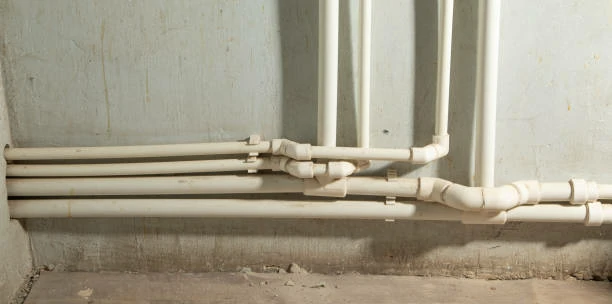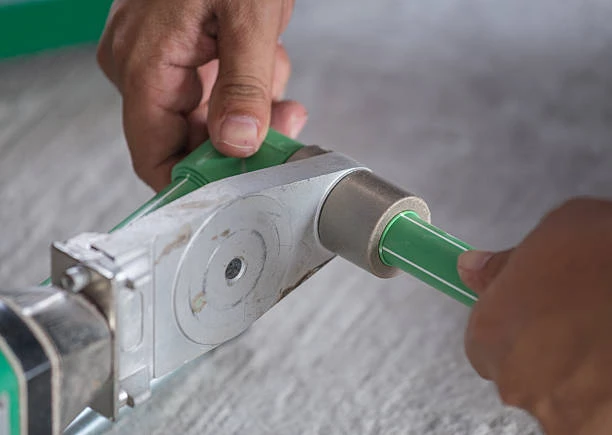Introduction
PPR pipes and fittings are essential components in modern plumbing systems. Made from polypropylene random copolymer, they offer durability, heat resistance, and corrosion resistance. This article explores the types of PPR fittings, their uses, and why they are a popular choice for residential, commercial, and industrial applications. Whether you’re planning a new plumbing project or upgrading an existing system, understanding PPR pipes and fittings can help you make informed decisions.
1. Types of PPR Fittings
PPR fittings come in various types to suit different plumbing needs. Common types include elbows, tees, couplings, reducers, and unions. Elbows change the direction of the pipe, typically at 45° or 90° angles. Tees allow for branching connections, while couplings join two pipes of the same size. Reducers connect pipes of different diameters. Unions, such as live unions, enable easy disassembly for maintenance. For example, a 32mm PPR elbow is ideal for redirecting water flow in a residential plumbing system.
2. Applications of PPR Pipes and Fittings
PPR pipes and fittings are versatile and widely used in various applications. In residential settings, they are ideal for hot and cold water supply systems. For example, 25mm PPR pipes are commonly used for household water distribution. In commercial buildings, they handle heating systems and compressed air distribution. Their resistance to chemicals makes them suitable for industrial applications, such as chemical transport. PPR pipes and fittings are also used in agricultural irrigation systems, ensuring efficient water flow.
3. Benefits of Using PPR Pipes and Fittings
PPR pipes and fittings offer numerous advantages over traditional materials. They are highly resistant to chemical corrosion, ensuring safe water transport. Their smooth interior minimizes friction, improving water flow efficiency. PPR pipes can withstand high temperatures, making them suitable for hot water systems. For instance, they handle temperatures up to 95°C without deformation. Additionally, PPR fittings are lightweight and easy to install, reducing labor costs and time. Their long lifespan, often exceeding 50 years, makes them a cost-effective solution.

4. Installation of PPR Pipes and Fittings
Installing PPR pipes and fittings requires specific tools and techniques. Use a PPR pipe cutter for clean, straight cuts. Connect pipes and fittings using a welding machine, which heats the materials to create a secure bond. For example, a 40mm PPR pipe requires precise welding to ensure a leak-proof connection. Proper alignment and heating time are crucial for a strong joint. Once installed, PPR systems require minimal maintenance, ensuring long-term reliability.
5. Choosing the Right PPR Fittings
Selecting the right PPR fittings depends on your project requirements. Consider factors like pipe size, application, and system design. For example, a 20mm PPR tee is ideal for branching water lines in a residential system. Ensure the fittings meet international standards like ISO 15874. Look for reputable manufacturers that offer high-quality products. Proper selection and installation of PPR fittings ensure efficient and durable plumbing systems.
Conclusion
PPR pipes and fittings are a reliable and versatile solution for modern plumbing systems. Their durability, heat resistance, and ease of installation make them ideal for residential, commercial, and industrial applications. By understanding the types and uses of PPR fittings, you can create efficient and long-lasting plumbing systems. Choose PPR pipes and fittings for your next project and enjoy the benefits of a high-quality plumbing solution.
FAQs
1.What are PPR fittings made of?
PPR fittings are made from polypropylene random copolymer, a plastic designed to be strong and flexible. This material resists high temperatures and pressure, making it an ideal choice for plumbing systems. It doesn’t corrode, is lightweight, and has low friction, helping water flow smoothly. You’ll commonly find PPR fittings in both domestic and industrial applications, especially for cold and hot water systems.
2.Can PPR fittings be used for hot water systems?
Yes, PPR fittings work perfectly for hot water systems. These fittings withstand water temperatures up to 95°C (203°F), making them ideal for plumbing, heating, and air conditioning systems that need heat resistance. PPR fittings maintain their integrity under harsh conditions, which contributes to their long lifespan and reliable performance in residential and commercial settings.
3.How long do PPR pipes and fittings last?
PPR pipes and fittings last for over 50 years when installed correctly. Their durability stems from their resistance to corrosion, scale buildup, and chemical degradation. They also resist UV rays, making them suitable for both indoor and outdoor use. Proper installation, regular maintenance, and keeping the system within recommended temperature and pressure limits will extend the life of the system.
4.Are PPR fittings eco-friendly?
Yes, PPR fittings are eco-friendly. They are made from recyclable materials, and their production typically has a lower environmental impact compared to other types of plastic pipes. PPR pipes and fittings do not contain harmful substances like heavy metals, making them a safe choice for drinking water and environmentally sensitive areas. The long lifespan of PPR fittings also reduces the need for frequent replacements, cutting down on waste.
5.What tools are needed to install PPR fittings?
To install PPR fittings correctly, you will need:
- PPR pipe cutter: This tool cuts PPR pipes to the correct lengths without damaging the material.
- Welding machine (fusion machine): This machine heats the pipe ends and fittings, then presses them together to create a strong, leak-proof bond.
- Measuring tools: Accurate measurements ensure the pipes are cut to the correct length and the fittings align properly.
You may also need a marker to mark cutting lines and sandpaper to smooth the pipe edges before joining them. Always follow the manufacturer’s guidelines for safe and effective installation.

















